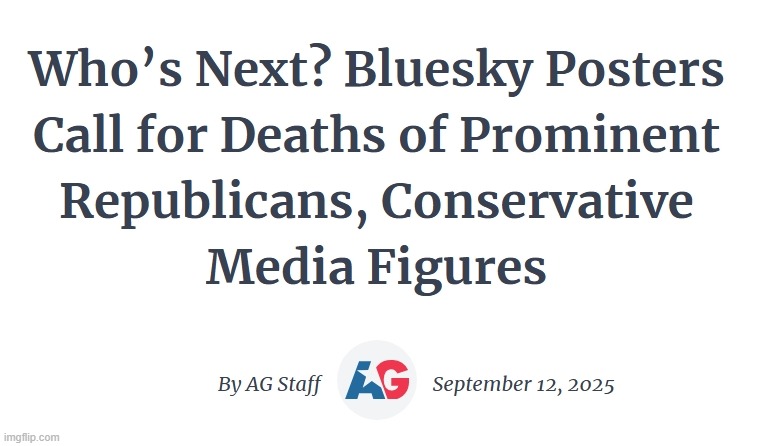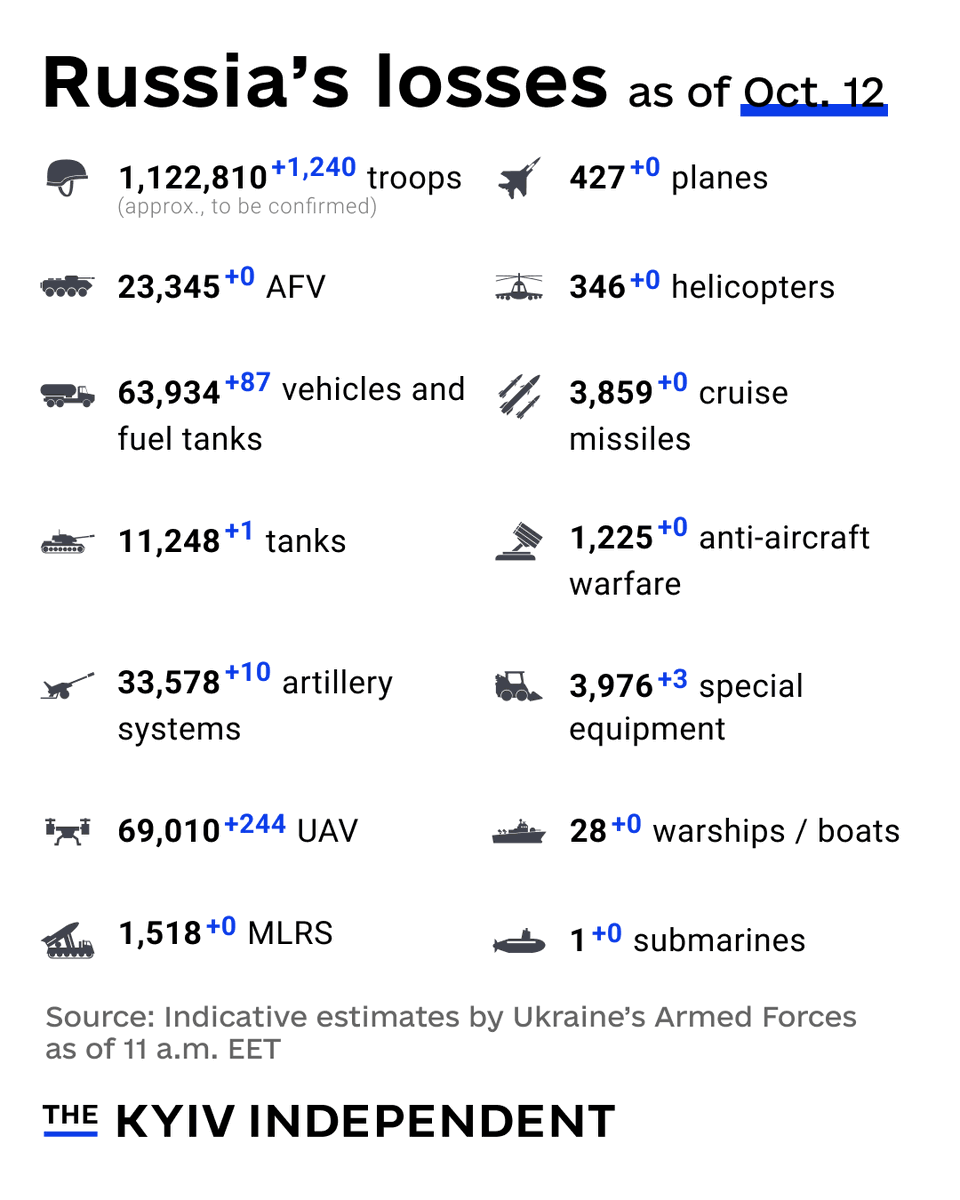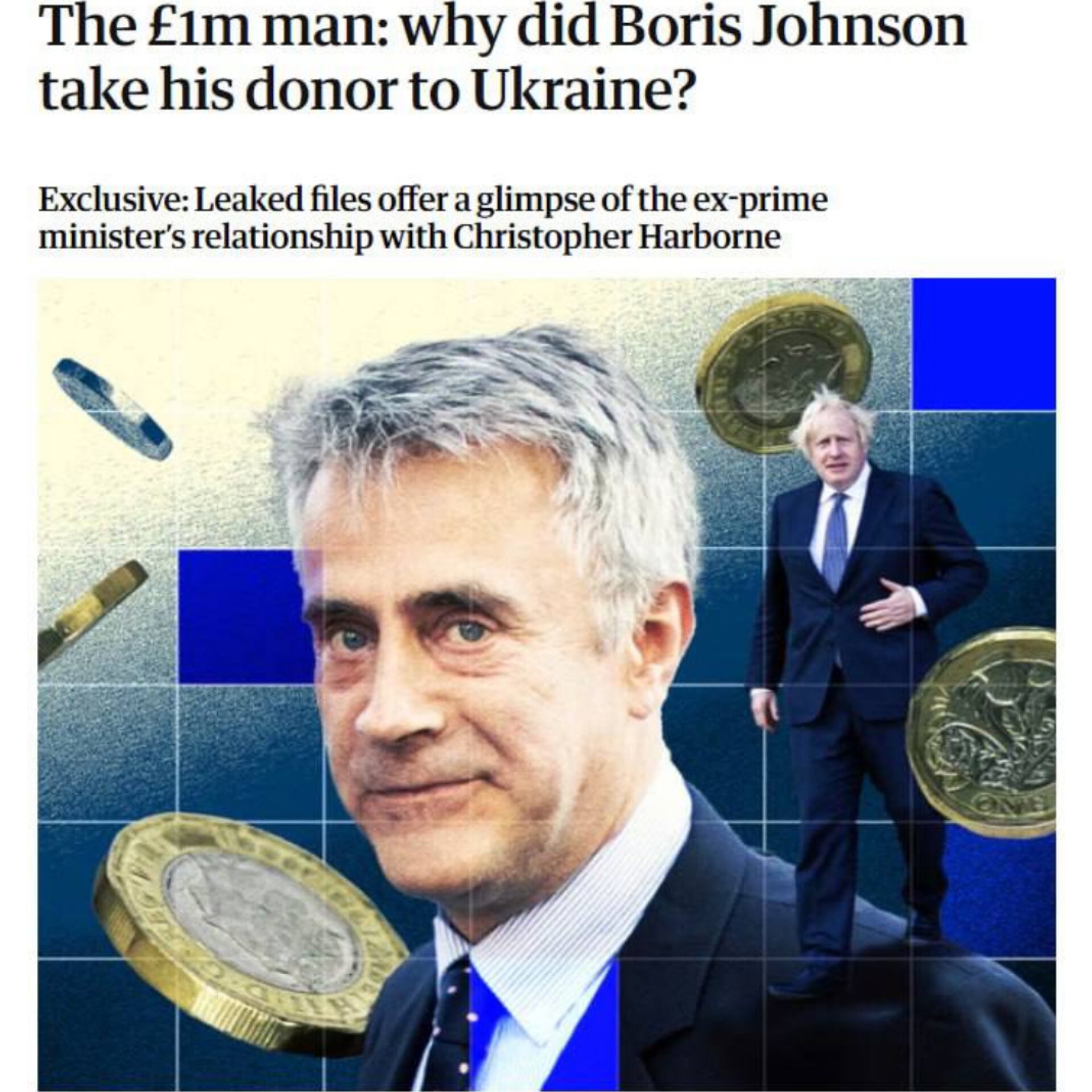Posted on 02/24/2024 5:59:01 AM PST by SpeedyInTexas
Why celebrate this crap?

Moving away from Neville...
Far from Winston though.
“Ukraine hit Russian energy sites with US help”
“The US has for months been helping Ukraine mount long-range strikes on Russian energy facilities, in what officials say is a co-ordinated effort to weaken Vladimir Putin’s economy and force him to the negotiating table.
American intelligence shared with Kyiv has enabled strikes on important Russian energy assets including oil refineries far beyond the frontline, according to multiple Ukrainian and US officials familiar with the campaign.
The previously unreported support has intensified since midsummer and has been crucial in helping Ukraine carry out attacks that Joe Biden’s White House discouraged. Kyiv’s strikes have driven up energy prices in Russia and prompted Moscow to cut diesel exports and import fuel.
The intelligence sharing is the latest sign that Trump has deepened his support for Ukraine as his frustration with Russia has grown.
The shift came after a phone call between Donald Trump and Volodymyr Zelenskyy in July, when the FT reported the US president asked whether Ukraine could strike Moscow if Washington provided long-range weapons.
Trump signalled his backing for a strategy to “make them [Russians] feel the pain” and compel the Kremlin to negotiate, said the two people briefed on the call. The White House later said Trump was “merely asking a question, not encouraging further killing”.
The US intelligence helps Kyiv shape route planning, altitude, timing and mission decisions, enabling Ukraine’s long-range, one-way attack drones to evade Russian air defences, said the officials familiar with the matter.
Three people familiar with the operation said Washington was closely involved in all stages of planning. A US official said Ukraine selected the targets for long-range strikes and Washington then provided intelligence on the sites’ vulnerabilities.
But others involved and briefed on the operations said the US had also set out target priorities for the Ukrainians. One of them described Kyiv’s drone force as the “instrument” for Washington to undermine Russia’s economy and push Putin towards a settlement.
Trump has been open about his disappointment with Putin since he rolled out the red carpet for his Russian counterpart at an Alaska summit that made little tangible progress. This was a factor in Trump’s shift in support of deeper strikes, the people said.”
https://archive.is/Px7wy#selection-2311.0-2323.256
Financial Times cont.:
Washington has long shared intelligence with Kyiv to assist in attacks on Russian military targets in occupied areas of Ukraine, and to provide advanced warning of Russian missile and drone strikes. The Biden administration approved strikes with US HIMARS and ATACMS missiles inside a Russian region bordering Ukraine after North Korea deployed troops there to bolster Moscow’s forces.
But the US has not acknowledged a direct role in Ukraine’s strikes on Russian energy facilities. Washington has long remained cautious about actions that could escalate the war and draw it more directly into conflict with Moscow.
The growing operational support from the Trump administration starkly contrasts with earlier in the US president’s second term, when he briefly halted intelligence sharing and military aid to Kyiv to pressure it into peace talks with Moscow.
Zelenskyy declined to speak about US intelligence’s role in his army’s deep strikes inside Russia in a briefing in Kyiv on Wednesday. But he said Ukraine was “working with US intelligence, primarily to defend ourselves”, referring to the Patriot, NASAMS and Iris-T air defense systems provided by western partners.
Ukraine’s recent success with deep strikes was mostly because of technological upgrades to drones and increased domestic production, which has allowed Kyiv to launch more at once. “Our drones, drone-missiles and some missiles are getting better: more uses, greater production,” he said.
Most of the deep strikes are conducted by Ukraine’s SBU security service and the Unmanned Systems Forces branch of the country’s Armed Forces. But other intelligence and military units also play roles in the attacks.
Zelenskyy said Ukraine’s Fire Point and Liutyi long-range drones - sometimes up to 300 in a single operation - had led the swarm attacks. But Ukrainian forces had also recently fired domestically-produced Neptune and Flamingo missiles at targets inside Russia.
On Saturday, the SBU said its elite Alpha unit’s long-range drones had successfully hit the Bashneft-UNPZ oil refinery in Ufa, some 1,400 kilometres from Ukraine. The plant is one of the largest refineries in Russia, supplying fuel and lubricants to the Russian army.
It marked the 3rd strike on energy facilities in Russia’s Bashkortostan region in the past month.
The SBU told the FT its “long-range strikes are aimed at destroying the enemy’s military potential - including its economic capabilities”. It added Kyiv would work to increase the number and breadth of strikes within Russia.
A White House official said the war “never would have happened” under a Trump presidency and that he was “trying to get it stopped”. The Office of the Director of National Intelligence and the Department of Defense declined to comment.
Kremlin spokesperson Dmitry Peskov earlier this month said it was “obvious” the US and NATO were providing intelligence to Ukraine “on a regular basis” including for strikes on Russian energy targets.
Trump has not decided whether to provide long-range missiles to Ukraine, including Tomahawk cruise missiles, saying on Monday he wanted to find out more about how they would be used.
Zelenskyy on Wednesday said the Tomahawk option was being considered and it “could strengthen Ukraine and sober the Russians up a bit”.
Soon after the July call, the four people familiar with the Ukrainian deep strike drone operation said US intelligence with a new level of specificity began flowing to Kyiv. That information has allowed Kyiv to better map Russian air defenses and plot strike routes.
The tempo of Ukraine’s strikes on Russian oil and gas facilities and pipelines that underpin Moscow’s war effort escalated dramatically in August and September. The damage forced Moscow to curtail diesel exports and increased its reliance on imported fuel.
At least 16 of the country’s 38 oil refineries have been struck, some repeatedly, disrupting more than 1mn barrels a day of refining capacity, according to Energy Aspects, a research group. Russian social media videos, verified by the Financial Times and independent analysts, have shown numerous large oil and gas facilities in flames.
Zelenskyy on Wednesday said Moscow was importing petrol - “notably from Belarus and China” - and had restricted exports. Russia probably lost up to 20 per cent of fuel production capacity because of the Ukrainian strikes, he added.
A retired Ukrainian general just admitted what Kyiv won’t say out loud: Patriot missile systems - the West’s crown jewel of air defense - are almost useless right now.
Effectiveness has plummeted from 42% to just 6%, thanks to Russia’s upgraded Iskander and Kinzhal missiles, which now swerve mid-air, drop into steep dives, and confuse the interceptors.
Ukraine has only a handful of Patriot batteries, gifted by the U.S, Germany, and the Netherlands, with each one costing roughly $1 billion.
Now they’re struggling to stop missiles that basically juke left-right like they’re playing Madden.
Last week, Russia launched a massive retaliatory strike, wiping out power across Kyiv and other regions. Zelensky blamed the fog and rain - but the tech gap is growing.

Blue sky, nothing but blue sky…😂🤡
The Russian defense industry is implementing long term efforts to increase T-90 tank production and recreate Russia's pre-war tank reserves, indicating that Russia intends to present a long term military threat to the North Atlantic Treaty Organization (NATO). Ukraine-based open source intelligence (OSINT) organization Frontelligence Insight published internal documents from Russia's primary tank manufacturer, Uralvagonzavod (UVZ), on October 11 that reveal that UVZ aims to increase T-90 production by 80 percent by 2028, compared to 2024 levels, and launch production of the new T-90M2 (Project 188MS) variant, also referred to as Ryvok-1 (Dash-1).[1] The documents, which ISW reviewed but cannot independently verify, indicate that UVZ aims to surge tank production beginning in 2027. The documents indicate that UVZ estimates a projected 2026 output of 10 T-90M2 tanks and intends to produce a peak of 428 T-90M and T-90M2 tanks in 2028. The documents indicate that UVZ intends to produce a total of 1,118 new and modernized T-90M and T-90M2 tanks between 2027 and 2029. Ukrainian officials previously assessed that UVZ can only produce roughly 60 to 70 T-90 tanks per year under perfect conditions, and UVZ is likely producing between three and six T-90 tanks per month.[2] A Russian milblogger claimed on July 31 that UVZ produced 540 to 630 T-90M tanks since February 24, 2022 (an estimated average of 13 to 15 tanks per month).[3]
The Russian defense industry may have to increase its production capacity for tank production by integrating more automation and high-precision machine tools to achieve the planned T-90 production increase, as Russia continues to face labor shortages and mounting casualties in Ukraine.[4] UVZ notably launched a program to train computer numerical control (CNC) machine operators in March 2025, likely to expand UVZ’s production capacity.[5] Russia has consistently relied on its allies to obtain high precision machine tools through sanctions evasion; the Ukrainian Main Military Intelligence Directorate (GUR) reported on September 1 that UVZ continues to produce tank engines with European-manufactured CNC machines that Russia obtains through sanctions evasion schemes.[6]
While the T-90 production targets as described in the leaked documents are aspirational figures that Russian industry may not meet, the plans nevertheless indicate that Russia seeks to rearm and is setting conditions to pose a significant long term military threat to NATO far beyond the end of the current war in Ukraine. Frontelligence assessed that UVZ’s goals to modernize the Russian armored fleet with over 2,000 T-90M, T-90M2, and T-72B3M tanks between 2026 and 2036, in addition to the tanks and armored vehicles that Russia produced in 2024 and 2025, is sufficient to fully replenish Russia's tank fleet for another large scale war.[7] Open-source tracking indicates that Russian tank losses have decreased through 2025, and a senior Finnish military official stated on April 27 that Russia is sending “almost none” of its newly produced tanks to the frontline in Ukraine but is stockpiling the tanks for “later use.”[8] The planned production increase indicates that Russia plans for military contingencies beyond the current war in Ukraine on the backdrop of its current “Phase Zero” operations against Europe and that Moscow seeks to project power against NATO.[9]
Recent open-source data indicates that Russia is also increasing its refurbishment of T-72 tanks, possibly for use on the battlefield in Ukraine in the short term or to reestablish its tank reserve to threaten NATO in the medium term. A social media source tracking Russian military depots via satellite imagery reported on October 8 that Russia's total tank reserve has dropped from 3,106 to 2,478 in the last three to four months (since June or July 2025) and that Russia's T-72A reserve specifically has dropped from 900 to 461.[10] The source noted that the Russian military appears to be drawing T-72A tanks from previously untouched storage bases in order to refurbish the tanks and that the Russian defense industrial base (DIB) appears to be cannibalizing remaining T-64 tanks. The source suggested that Russia is likely in a refurbishment phase and will likely be able to utilize these refurbished tanks in Ukraine. The source estimated that Russia has roughly 141 T-54/55, 885 T-62, 611 T-64, 492 T-72A, 287 T-72B, 44 T-80B, 82 T-80U, and zero T-90 tanks left in its reserve.[11]
ISW continues to observe a notably reduced use of Russian tanks on the battlefield compared to Russia's intensified use of armored vehicles in late 2023 and 2024, suggesting that Russia may be stockpiling tanks and is likely aiming to build out and modernize its tank reserves for both short-term use in Ukraine and for the medium- to long-term in preparation for a potential conflict with NATO.[12] The Russian military may remain reticent to increase their use of armored vehicles on the battlefield again given that Ukrainian drones have been quite successful in damaging and destroying Russian armored vehicles and that the Russian DIB appears to be pivoting to a lengthier refurbishment phase.
Russian forces are still using tanks to advance on the battlefield during infrequent mechanized assaults when Ukraine's drone defenses are degraded, indicating that the tank remains and will remain a relevant weapon on the battlefield under proper tactical conditions. Russian forces recently conducted a company-sized and reinforced battalion-sized mechanized assault in the Kostyantynivka-Druzhkivka-Dobropillya areas in Donetsk Oblast after largely refraining from conducting larger mechanized assaults.[13] Russian forces appear to be conducting these assaults during rainy weather conditions, as rain and high winds impede Ukrainian drone operations.[14] Russian forces will likely continue to seize on bad weather as an opportunity to advance when Ukrainian forces cannot effectively fly drones. This dynamic underscores that Ukraine's drone defenses depend on certain weather conditions and that drones alone are insufficient to defend against ground and armored forces. Russia's reported efforts to refurbish T-72A tanks indicate that Russia will likely have sufficient armored stocks to re-equip frontline units in priority areas and continue opportunistic mechanized assaults in the short term, although Russia may also stockpile newly refurbished or produced tanks for future use in Ukraine or against a NATO member state.
Russia may be able to pose a significant threat to NATO on a timeline much sooner than 2036 and without necessarily reconstituting its tank fleet. Russia's ongoing sabotage and drone reconnaissance activities against military bases and critical infrastructure in Europe indicate that Russia has already entered “Phase Zero,” the informational and psychological condition setting phase, of its campaign to prepare for a possible NATO-Russia war in the future.15] Russia's long range strike capabilities and enhanced drone production capabilities represent an immediate threat to NATO.[16] Russia's force generation efforts and reported efforts to generate a strategic manpower reserve–which Russia could choose to employ in Ukraine or in a future land war against NATO–suggest that Russia can sustain and reconstitute its manpower despite continuously heavy losses from its ongoing war in Ukraine.[17] Russia will likely have significant combat power made available within months following the end of active fighting in Ukraine, which Russia likely can rapidly deploy to NATO's eastern flank. Russia is developing concepts of operation and warfighting tactics that allow Russia to pursue large scale combat operations without using masses of tanks or armor, while effectively denying an adversary from using tanks or armor at scale. Russia is also learning how to achieve the effects of battlefield air interdiction in an adversary's rear without establishing air superiority or air supremacy.[18] ISW has observed no indication that the Russian military command would need to wait until the Russian military reconstitutes to its full end strength before intensifying its attacks against NATO member states, and in fact, Russia may attack before that moment if NATO fails to establish deterrence. Russia is currently gaining significant experience in modern warfare within an ever changing theater characterized by an extremely short innovation cycle while tolerating a highly attritional, infantry-led war in Ukraine–the likes of which Europe has not engaged in since the 1940s. NATO and its allies must prepare to deter and, if necessary, defeat threats that Russia will likely pose immediately following the end of active fighting in Ukraine, but also into the future.
European authorities continue to report increased unidentified drone sightings in European airspace near military facilities. Czech General Staff Spokesperson Zdeňka Košvancová reported on October 10 that the Czech military has detected an increasing number of incidents involving unidentified drones operating near Czech infrastructure, particularly military facilities, in recent weeks.[19] German outlet Der Spiegel reported on October 9 that the German military detected an unidentified drone that entered the security perimeter of a NATO air base in Geilenkirchen on the evening of October 8.[20] Der Spiegel, citing an internal memo, reported that the drone overflew the air base's runway at low altitude. Der Spiegel noted that the NATO air base houses airborne early warning and control (AWACS) surveillance aircraft that fulfill a critical role in monitoring NATO's eastern flank. Der Spiegel reported that German authorities have not yet attributed the incident to any specific actor. ISW assesses, however, that Russia has been increasingly engaging in covert and overt attacks against Europe and that Russia has entered Phase Zero of its campaign to prepare for a possible NATO-Russia war in the future.[21] The ongoing unattributed drone incursions across Europe are part of a recently intensified pattern and therefore are likely part of Russia's broader condition setting effort.
Ukraine's European partners continue to allocate aid to Ukraine and deepen cooperation with the Ukrainian defense industrial base (DIB). Ukrainian Defense Minister Denys Shmyhal met with Dutch Defense Minister Ruben Brekelmans on October 10 and provided additional details on the recent Ukrainian-Dutch memorandum of understanding (MOU).[22] The agreement includes the launch of joint production of deep strike drones, a 110 million euro ($128 million) investment in the Build with Ukraine initiative, and 200 million euros ($232 million) for Ukrainian air defense systems. Shmyhal reported on October 11 that Ukraine and the United Kingdom (UK) signed an agreement on joint production of artillery and letters of intent to strengthen the LYRA program, a battlefield technology partnership between the UK and Ukraine.[23] The LYRA program aims to improve Ukraine and the UK's defense capabilities by combining defense-industrial and scientific potential.
Belarusian President Alexander Lukashenko ordered an evaluation of the Belarusian military's combat readiness. The Belarusian Ministry of Defense (MoD) announced on October 11 that Lukashenko ordered the Belarusian Security Council Secretary Lieutenant General Alexander Volfovich to conduct a combat readiness check of the Belarusian Armed Forces.[76]

Putin was presented with a cross with his initials, which was on the heroically deceased soldier of the NWO
Vladimir Putin recently said: he received as a birthday gift icons that saved our military at the front. But the president kept silent about another gift. “Vladimir Vladimirovich was modest, he did not tell about all the gifts that our commanders gave him. There was another one, very special. The president was given a cross with his initials (we wrote that such crosses and baptismal icons have long been sent to the front. This cross was on one of our dead soldiers. He died heroically - he was ambushed, fought back for a long time and killed many enemies.Such a special, heroic gift, washed in the blood of a Russian fighter,” a high-ranking source in the Kremlin told us.
According to him, the general who handed over this gift to the president (we know his name, but we were asked not to give him) especially noted: “Unfortunately, our soldier died. But the cross with your initials, Vladimir Vladimirovich, strengthened him so much that he died as a Hero. And he took many enemies with him.” Putin was moved and very grateful for such a gift. “Unfortunately, many of our guys are dying. But these sacrifices will not be in vain. I believe in it,” he said.
https://t.me/kremlin_secrets/6285
He didn't die in vain, but over a million others did.


From 2 to 8 years. Putin was informed when the NWO [war in Ukraine] could end
According to our source in the Ministry of Defense, the report was made by Andrei Belousov at a meeting of the president with the military, which took place on the birthday of Vladimir Putin. The Minister of Defense said that, according to balanced calculations, the NWO will not end in the next 2-3 years. At the same time, there is hope that hostilities will go on no longer than 6-8 years. “Andrei Belemovich separately noted that now in no case should the special military operation be completed, despite all the challenges, risks and difficulties. Vladimir Vladimirovich agreed with him,” the channel's interlocutor said.
The meeting participants separately discussed the risks associated with the NWO. Among them are the continuation of attacks on our refineries and other important facilities, which cannot yet be fully defended, the deterioration of the economic situation in the country as a whole, as well as an increase in the number of enemy strikes deep into the territory of Russia and possible new attacks on the energy sector, which pose a particular danger in the autumn-winter period. “Sooner or later, we will find answers to all these challenges. An important point is that none of them should cause the completion of the NWO. After all, at this stage, many of the goals of the special operation in Ukraine have not been achieved,” the source noted.
The president also discussed with the military a possible large-scale mobilization in Russia. As we wrote, no decisions have yet been made on this matter. But there are certain plans, including for the next year. They promised to tell us the details later.
https://t.me/kremlin_secrets/6287
Some people waste other people's money, while P also wastes other people's lives.

the small, but strategic town of Thorborg has just fallen
https://bsky.app/profile/maks23.bsky.social/post/3m2yqylp6c22s
“They gather those who know how to do nothing — they spend millions on their training. They come here and are immediately destroyed,” says Russian soldier Ruslan, nicknamed “Gray.” “Gray” served in the Russian Armed Forces’ 88th Reconnaissance-Sabotage Brigade “Española” (which officially announced its disbandment on October 2, 2025, presumably due to heavy losses) and participated in combat operations in the city of Chasov Yar.
The Russian soldier spoke about the short lifespan of men who were enlisted in the Russian Federation Armed Forces after only two weeks of training. According to him, such recruits are mostly destroyed during their very first combat mission.
▪️ Ruslan also spoke about the heavy losses of his unit:
“I am a saboteur by specialty. Only six of us remain: there were seventy — six remain.”
▪️ According to the fighter, many dead Russian soldiers’ bodies remain on the battlefield, and their evacuation is not even carried out. Many bodies remain in the rubble:
“You walk over corpses — there is no way. You just can't tell who you're stepping on… Our 3rd brigade got buried in the rubble — those who were in the basement — their bodies cannot be removed, and those who lived on the first floor — all were destroyed… The ‘path of life’ is surrounded by corpses, just fields full of bodies. Why aren't they removed? They could have been removed, but now if you try to evacuate destroyed bodies, they all fall apart. If you pull on a leg — the leg will come off.”
▪️ The soldier explained that the command forbids collecting documents of the dead so that compensation is not paid to their families:
🔹 “We used to go and collect documents. Not bodies, documents. Then we would visit the battalion commander and hand over the documentation. Later, this was forbidden because the Ministry of Defense does not like it… Personally, when the time came, I collected 70-80 military IDs in one day, imagine, in one day. Just imagine — how much money that is (referring to compensation), and about fifteen people like us went there… Fifteen of us walk in the field and collect: we go and there are 700-800 military IDs, imagine how much money that is — 700-800 military IDs.”
https://x.com/visionergeo/status/1977264592897081746
video 3 min Russian
Neftekumsk, Stavropol Krai, Russia, population 22000.
Next to Major General Klimenko’s name, it is worth noting that most of the dead were in the rank of Private, i.e., cannon fodder.
Disclaimer: Opinions posted on Free Republic are those of the individual posters and do not necessarily represent the opinion of Free Republic or its management. All materials posted herein are protected by copyright law and the exemption for fair use of copyrighted works.